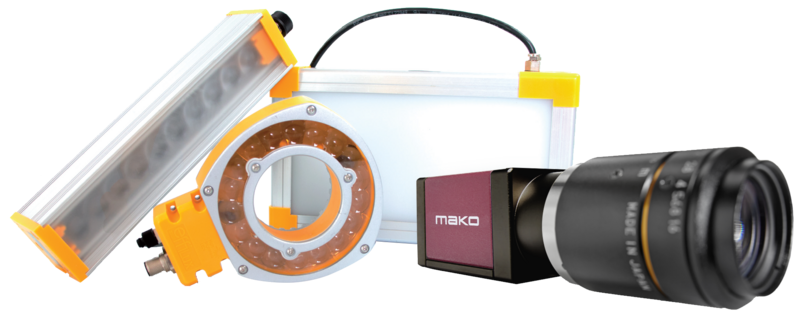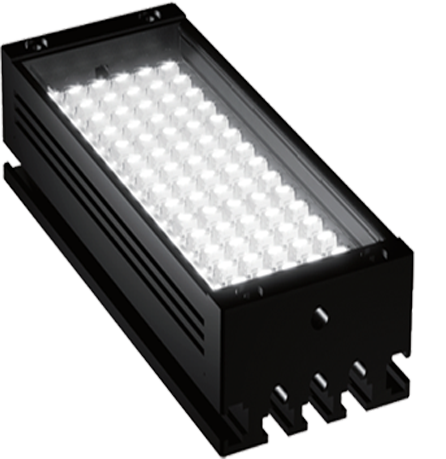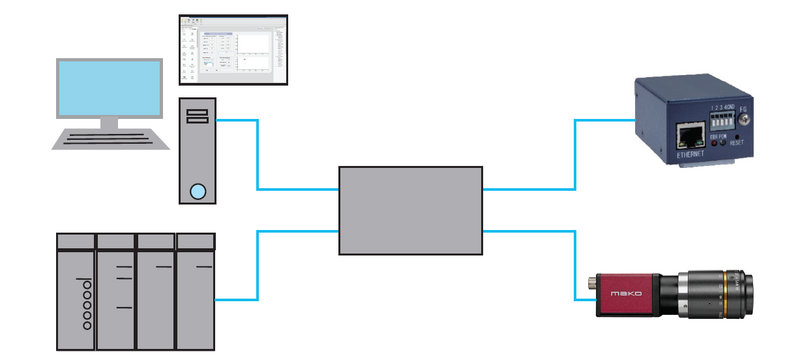Lighting

The importance of lighting
You select your camera by the sensor specifications for resolution, pixel size, spectral characteristics, quantum efficiency, and the available frame rate.
Lighting is equally important for successful applications. Among other factors, lights can be characterized by spectrum, uniformity, thermal radiation, and power consumption.
The color of the light can be used to emphasize object details, avoiding subsequent image processing steps. Controlling reflections and making structures visible is another effect out of the powerful toolbox.
Typical lights
Basic types of lights are used to enable optimum imaging results:
- Direct ring lights illuminate objects parallel to the lens, suppressing surface structures. Because ring lights have a small footprint and are used close to the camera, they are favored for moving-camera applications.
- Low angle ring lights illuminate objects from the sides, emphasizing surface structures and avoiding reflections.
- Bar lights are available in various sizes to use space most efficiently. They enable both direct light and low angle light.
- Dome lights create most diffuse illumination, avoiding reflections.
- Back lights illuminate objects from the back, making transparent details visible or reducing objects to the contours.
Continuous lights versus strobe lights
Classical continuous light sources emit considerable heat. consuming high power. The LED technology is more efficient, which can be increased when strobe lights are used. A typical use case for strobe lights is to avoid the rolling shutter effect. Objects on fast moving conveyor belts can be acquired without distortion or blur.
Practical lighting
This is an example out of many for special lighting requirements: Sample inspections require reproducible results. Therefore, lighting must compensate for the changing brightness and color temperature of natural light, or deviations in the object color and surface structure.
How can Mako cameras trigger lights? See the application notes:
CCS Lighting with Mako cameras
Synchronizing your Allied Vision camera with a strobe couldn’t be easier with the output port of its General Purpose Input and Outputs (GPIO). Our industrial-grade I/O cables and the pinning documentation provided in partnership with leading illumination vendors will help you get started.



